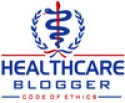Many clinicians say that healthcare is different.
I’m going to be a bit controversial in this post and agree that healthcare has unique challenges that make it more difficult to automate than other industries.
Here’s an inventory of the issues
1. Flow of funds – Hospitals and professionals are seldom paid by their customer. Payment usually comes from an intermediary such as the government or insurance payer. Thus, healthcare IT resources are focused on back office systems that facilitate communications between providers and payers rather than innovative retail workflows such as those found at the Apple Store.
2. Hiring and training the workforce – Important members of the workforce, the physicians delivering care, are seldom employed by the hospital. This is rare if not non-existent in any other industry. It’s as if Toyota built a factory that anyone can use but does not hire or train the workers who build cars. If someone wanted to create a Toyota with wings and an outboard motor, they would have the freedom to do it.
3. Negotiating Price – Reimbursement no longer is based on a price schedule hospitals and professionals can control. It is based on a prospective payment model such as DRGs that someone else designs and dictates. Where else in the US do prices get dictated to a firm?
4. Establishing referral relationships – We cannot market services to those who control our patient flow due to Stark anti-kickback regulations. In other industries, you can build relationships, offer special incentives, and arrange mutually beneficial deals to develop your referral business. In healthcare, it’s illegal even when unilaterally funding an action would make things easier for both parties and the patient.
5. Standardizing the product – In most industries, the product or service can be standardized to improve efficiency and quality. In healthcare, every person is chemically, structurally, and emotionally unique. What works for one person may or may not work for another. In this environment, it is difficult to standardize and personalize care in parallel.
6. Choosing the customer – In most other industries, you can choose with whom you do business. Not so in healthcare. If you have an emergency department, you must provide treatment even if the customer has no means to pay.
7. Compliance – Data flows in healthcare in increasingly regulated. What other business, including the IRS, is required to produce, on-demand, a three year look back of everyone who accessed your information within their firm.
As I noted in speech about the Burden of Compliance “the more complex a health system becomes, the more difficult it becomes to find any system design that has a higher fitness.”
We are successfully automating healthcare workflows, motivated by HITECH incentives and the requirements of healthcare reform. The seven characteristics above have required vendors to create full featured software applications and organizations to create complex rollout/funding models that take time. By 2015 we will be there and I will be proud of all we’ve accomplished, given that the constraints on the healthcare industry are truly different than industries which have been earlier adopters of technology.

 RSS Feed
RSS Feed































